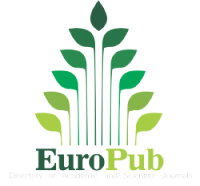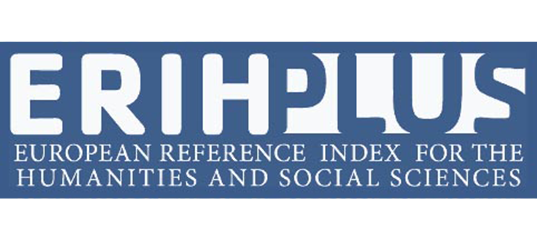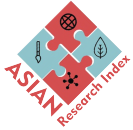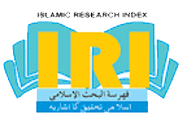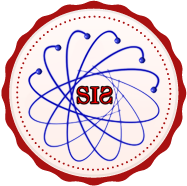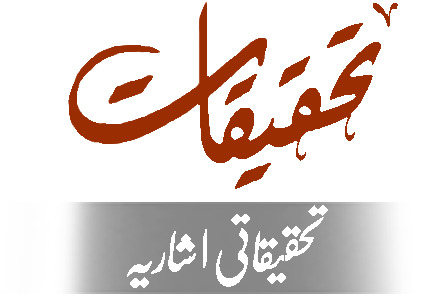FOR EDITOR
ETHICAL GUIDELINES
NOTE: These guidelines are retrieved from Higher Education Commission (HEC), Pakistan manual for “Ethical Guidelines for Journals”, which has been prepared by Dr. Rukhsana Kausar, Director Institute of Applied and Clinical Psychology, University of the Punjab, Lahore.
FOR EDITOR:
Being an editor, he/she should carry out their responsibilities with much dedication to improve the quality of the journal. It is advisable to oversee the journal policies time to time and assisting the publisher in maintaining the journal’s quality towards serving the scientific community. The Editor of a research journal plays an important role in establishing and maintaining professional standards. Publication of a paper in an HEC recognized journal is expected to be a reflection of the quality work of the author (s) and the affiliating institution (if any). The Editor is expected to perform the responsibility towards the journal on its all aspects and at varied stages i.e. from receiving of an article to publishing it. Keeping this in view, it becomes the prime responsibility of an editor to adopt the following guidelines while publishing papers in his/her research journal.
GUIDELINES FOR BEST EDITOR’S CHARACTERISTICS:
Shortly, these Characteristics should be in an Editor:
- To improve the ways of journal processes, the editor should actively seek the views of editorial board members, reviewers, authors
- Encourage research into peer review, technological advances and reassess journal processes in the light of new discoveries
- He welcomes their editor's suggestions in providing appropriate resources, guidance from experts and training to perform the publisher's role in a professional manner and improve the quality of the journal
- Encourage initiatives designed to prevent research misconduct and educate researchers about publication ethics
- Encourages submission of quality articles to the journal by personally recruiting authors, assisting them with outreach, and ensuring the marketing plan is executed
- Ensures feedback provided to authors is constructive, fair, and timely
- Should determine whether a submitted manuscript is appropriate for the journal
- Article submitted for peer review is a privileged communication that should be treated in confidence, taking care to guard the author's identity and work
- Recruit high profile reviewers using multiple sources, e.g., personal recommendations, Web databases, published choice review
- Should monitor the process of peer review and take steps to ensure this is of high standard
- Communicate with reviewers as regularly as possible, according to their availability and give them clear instructions in maintaining quality of the journal
- Avoid conflicts of interest when making assignments. Check whether the reviewer has a history of conflict with the author
- Should encourage reviewers to comment on- ethical questions and possible research and publication misconduct raised by submissions (e.g. unethical research design, inappropriate data manipulation, and presentation)
- The originality of article submissions and to be alert to redundant publication and plagiarism
- Ensure to rewrite content when required.( Typographical errors, incorrect line or page breaks, Spelling errors, Errors in grammar and syntax, Errors in word usage, graphs, the styling of tables, and other art, including their labels, captions, and text mentions, Ambiguous vocabulary and syntax)
- Should communicate directly with the author and the review team
- Recommend acceptance or rejection of the articles considered for publication to the journal Editor
- Should be able to resolve any conflicts
- THE EDITOR’S RESPONSIBILITIES:
The Editor of a research journal should be responsible for:
- Establishing and maintaining the quality of the journal by publishing quality papers in his/her journal.
- Promotion of freedom of expression within the cultural, constitutional/legal framework,
- Providing integrity and credibility of the research contributions,
- Meeting the needs of authors and readers,
- Maintaining ethical standards of their journal,
- Providing corrigendum for any correction, clarification, and apologies where required.
1.2 GOOD PRACTICES FOR THEIR JOB WOULD INCLUDE TO:
- Encourage new ideas and suggestions of authors, peer reviewers, members of editorial board and readers for improving quality of his/her journal,
- Apply the process of blind peer review in true letter and spirit,
- Promote innovative findings in the respective field and publish them on priority,
- Promote anti-plagiarism policy,
- Educate contributors (authors) about ethical practices in research, and
- Implement the journal’s policy without institutional pressure and revise the policy from time to time.
- FORMATION OF EDITORIAL BOARD:
- The Editor must ensure that the Editorial Board comprises prominent scholars of the field who can adequately promote the journal,
- The Editorial Board should comprise of and be responsible for the following:
- An Editorial Committee, who will be responsible for providing logistics, and
- Advisory Committee, who will be responsible for reviewing the submitted research articles, this committee should have at least 50% representation of scholars from abroad.
- May appoint Editorial Board members for a prescribed duration and add or revise the constitution of the Board if required,
- The Editor should inform new board members about ethical guidelines and their expected role and update the Editorial Board members about development, challenges, and any changes made in the journal policy,
- The Editorial Board should maintain the quality of the journal because an assigned category by the HEC (e.g. W, X, Y, and Z categories) will depend on the quality of published papers in it. It is the professional duty of the Board members to select credible research work, and
- To ensure the smooth functioning of the journal, the Editors are responsible for conducting the Editorial Board meetings on regular basis (at least twice a year).
- FAIR PLAY AND IMPARTIALITY:
- The criteria for the selection of research papers must be impartial and the Editor should select academically and scientifically sound articles,
- The Editor should:
- Promptly respond to the author (s) of the papers submitted for publication, and
- Assign a specific number to an article submitted for processing; and pay impartial consideration to all research papers submitted for publication.
- To ensure evaluation of the content of research papers impartially,
- Disregard the discriminating factors, e.g. gender, race, ethnicity, religious belief, cultural sentiments, political affiliation, seniority and/or institutional association of the author(s) while selecting articles for publication,
- To ensure impartiality of the review process by informing the reviewer (s) that s/he needs to disclose any conflicts of interest regarding the submitted research paper.
- CONFIDENTIALITY:
- The Editor must ensure confidentiality of the author(s) and reviewers during the process of double-blind peer review,
- Information pertaining to a research paper should not be disclosed by the Editor to anyone except the author(s), reviewer(s), and editorial board members,
- Upon reaching a decision about a research paper, only the Editor may disclose or announce title of the study and the name of the author(s) that has been accepted for publication. Any other information may only be disclosed with the prior approval of the author(s), and
- Confidentiality of the participants of the research should also be ensured by protecting personal information (e.g. identifiable personal details, images, and/or individual results). Editor should declare clear guidelines to the contributors (authors) regarding confidentiality of the individual participant.
- Prior to publication, the content of the manuscript should be kept confidential, both the Editor and reviewer(s) will not share or use any part of the work.
- EDITING AND FORMATTING GUIDELINES:
- The Editor should prepare clear guidelines about preparing and formatting of a paper and print these guidelines in each issue of the journal,
- The guidelines should cover information related to 'content' and 'format' of a research paper,
- Any preferred manual of style (e.g. APA, Chicago Manual, MLA Style, etc) should be declared as a policy decision.
- THE REVIEW PROCESS:
- Details about the review process should be declared,
- Editor should ensure that all published papers have gone through a double-blind peer review, and at least one of the reviewers is from outside the country.
- The Editor should ensure that peer-review is masked in both directions and as such the identity of the author is removed from the manuscript prior to its review in order to protect the confidentiality and privacy.
- The Editor should provide sufficient guidelines to reviewers, including necessary information about the review process and provide them a reviewer comment form for recording his/her comments.
- The Editor must ensure that peer review process is prompt, nondiscriminatory and highly professional.
- The Editor should develop a system of confidentiality of research papers undergoing the review process.
- The Editor is required to send reviewers' comments to author(s) promptly and should ensure that the corrections suggested by the reviewers are incorporated by the author(s) in true letter and spirit.
- The Editor to critically evaluate peer review practices regularly and make improvements, if, require.
- The Editor should maintain a database of competent and qualified reviewers. For this purpose, s/he may use various sources other than personal contacts to identify new reviewers (e.g. referring by author (s), citations and references section in a book/journal), and
- The Editor should refer troublesome cases (e.g. in case of one acceptance and one rejection or any conflict arising after review) to Advisory Committee in order to resolve the matter amicably.
- DEALING WITH MISCONDUCT:
- The Editor should encourage reviewers to comment on ethical issues and possible research and publication misconduct (e.g. inappropriate research design, incomplete detail on participant's consent, data manipulation, and presentation).
- The Editor should encourage reviewers to comment on the validity of submitted research paper and identify 'subtle (simply copy-paste)' and/or 'blatant (paraphrasing)' type of plagiarism, if, practiced by the author(s).
- The Editor should confirm plagiarism (carry out the objective check through Turnitin) and/or search for similar titles to the submitted research paper, and
- The Editor should be prepared to publish a corrigendum, remove and retract a plagiarized article if it comes to his/her knowledge subsequent to its publication.
- TRANSPARENCY:
- The Editor must ensure that multiple papers as a principal investigator submitted by an author should not be published in the same issue.
- Only ONE co-authorship is allowed for those authors who also contribute a research paper as a principal investigator in the same issue.
- For the members of the Editorial Board (including the Editor), it will only be limited to ONE paper per issue either to submit research paper as a principal investigator or co- author, and
- The Editor should adopt authorship or co-authorship policy that will set an example in the scientific community and strictly discourage any misconduct (e.g. forcible inclusion of a name in the author list). Authorship should only be given to those individuals who have substantially contributed in the said article.
- CONFLICT OF INTEREST:
- The Editor should not edit a submitted paper for those author(s) and/or institution against which s/he has any conflicts of interest (e.g. resulting from competitive, collaborative and/or professional standing).
- The Editor should also apply this guideline on their reviewers and Editorial Board members.
- To ensure unbiased review, the Editor should declare a clear cut policy for his/her own submission and a research paper submitted by an Editorial Board member, and
- The Editor must publish a list of common interests (e.g. financial, academic and/or any other type) for all Editorial Board members and editorial staff. This list should be updated from time to time.
- To ensure unbiased review, the Editor should declare a clear cut policy for his/her own submission and a research paper submitted by an Editorial Board member.
- In case of article (s) submitted by the Editor, the decision pertaining to the editor's submitted article/s, one of the Associate Editors must take responsibility for the evaluation of the article and information pertaining to reviewers should be kept confidential.
- DISCLOSURE:
- The Editor must not use any unpublished information/data from the submitted research paper without the permission of the author(s), and
- Any information received after the peer review process must be kept confidential and not used for personal gains.
- PUBLICATION DECISIONS:
- The Editor should only shortlist research papers which have relevance to the scope of the journal clearly stated in the Journal, using his /her judgment, but without any personal bias.
- After completion of the reviewing process, the submission of revised manuscript, and assessing the quality and validity, the Editor has a right to accept or reject a research paper.
- The Editor's decisions to accept or reject a paper for publication should be based purely on merit, academic standards and professional demands of the journal.
- The Editor must justify the reason (s) of rejecting a research paper to author(s). This may include:
- Failure to fit in the scope of the journal (may be communicated after preliminary review)
- Insufficient depth of content
- Major errors related to design, analysis, write up and format
- Any misconduct or conflicting factors (e.g. plagiarism, copyright infringement, legal issues, fake data, authorship issues)
- The Editor is required to timely communicate the editorial decision to the author(s),
- The Editors should not reverse decisions in favor or against the author(s) on their own.
- ESTABLISHING A PROCEDURE FOR APPEAL:
- The Editor is responsible for establishing a proper mechanism for appeals launched against:
- The rejection of a research paper.
- Objections to publications causing harm to any party.
Infringement of Ethical boundaries in any manner.


